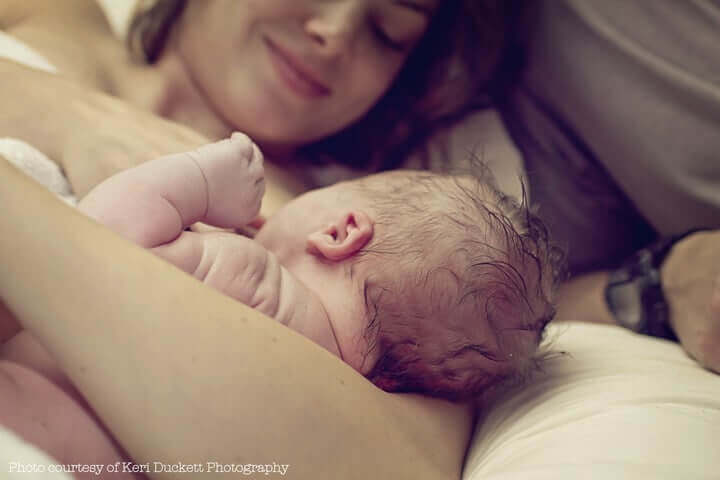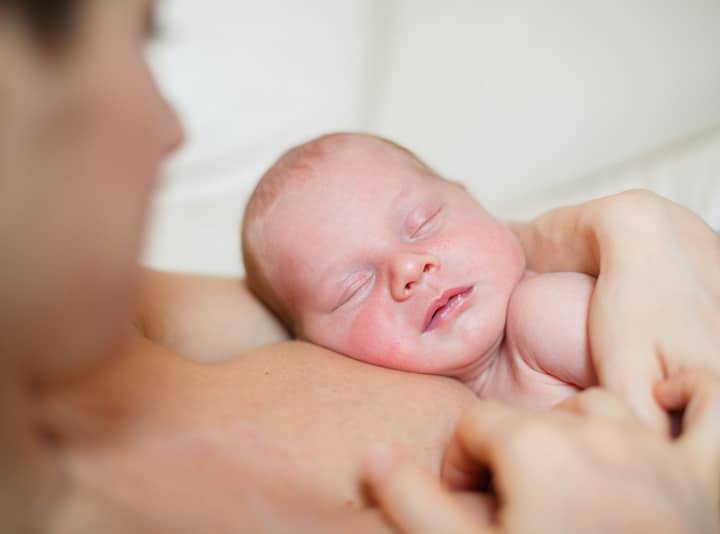
Kate Ogg snuggled her prematurely-born son to her chest, whispering soothing words over his tiny, 2lb 3 oz frame. Doctors told her that he had died, but something unexpected happened as she prepared to say goodbye. About 5 minutes after Kate drew him close and began talking to him, Jaime moved.
Her doctor told her it was a reflex, and that Jaime was gone. Kate and her husband continued to talk to and stroke him, and a bit later he gasped for air. They sent for the doctor, who refused to come because he believed they were in denial. After two hours of skin-to-skin contact, Jaime opened his eyes.
Kate and her husband sent for the doctor again, this time persuading him to come by saying they believed he had died and just wanted a few things explained. “When I pulled him off my chest he was startled and waved his arms around and tried to cry again, and the doctor goes ‘oh s***’.” (New Zealand Herald)
Jamie is now four years old, and last time reporters checked in with his family he and his twin sister were developmentally on track.
The practice Jaimie’s mom believes saved his life is called kangaroo care or skin-to-skin, and it has been credited with dropping preemie mortality rates from 70% to 30% in the town where it was first practiced. (source) But kangaroo care isn’t just beneficial for preemies – here are 7 reasons to be skin-to-skin with your baby after birth.
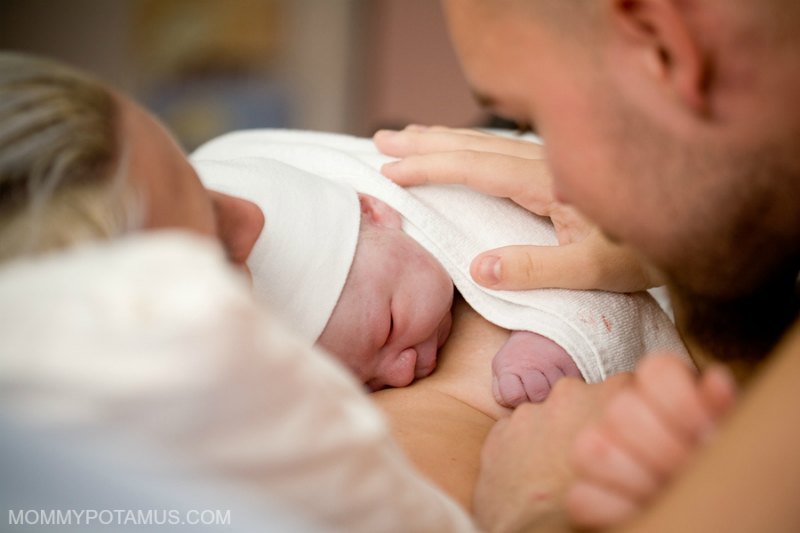
Benefit 1: Skin-to-Skin Keeps Baby Warmer, Regulates Breathing & Keeps Blood Sugar Levels Higher
What can your breasts do better than a $33K machine? Help stabilize your baby’s vitals, of course! Mothers naturally adjust “the warmth of their breasts to keep their infants at the optimal temperature,” says Midwifery Today. “Maternal breast temperature can rise rapidly, then fall off as baby is warmed. As the baby starts to cool, the breasts heat up again—as much as 2 degrees C in two minutes!” (That’s 3.6 degrees on the Fahrenheit scale)
Wait, it gets better. Because their systems are immature, babies sometimes temporarily stop breathing and/or have slowed heart rates. While most of the time the begin breathing again on their own, the cues you provide become the “training wheels” with which their little bodies can learn more quickly to organize essential systems. As you breathe, baby will synchronize their breath and heartbeat to yours. (source)
“Babies and their mothers share a deeply physiological connection. In one study of infant reaction to mothers, fathers, and strangers, an infant girl was brought into a lab and set in a plastic seat that was curtained off from distractions. The baby was then approached by her mother, then her father, and then a stranger.
Chest monitors on the baby and the adults showed that the baby synchronized her heart rate to that of the mother or father when they approached, but she did not synchronize her heart rate to the stranger’s.
The data suggests that babies and their caretakers are entwined in a homeostatic relationship, with the baby clicking in with the parents to achieve some sort of balance.”
Our Babies, Ourselves, p. 38 (emphasis mine)
Note: This study found that 3-month old babies and their mothers coordinate heart rhythms to be within milliseconds of each other when moms show signs of affection like smiling. Wow!
Newborns have faster heart rates than their mother, so though mama’s presence does help create a more rhythmical pattern, it will be different than yours. (And pssst! It’s not just moms and newborns – research suggests that we all have the capacity to synchronize heartbeats with those we love.) (source 1, source 2)
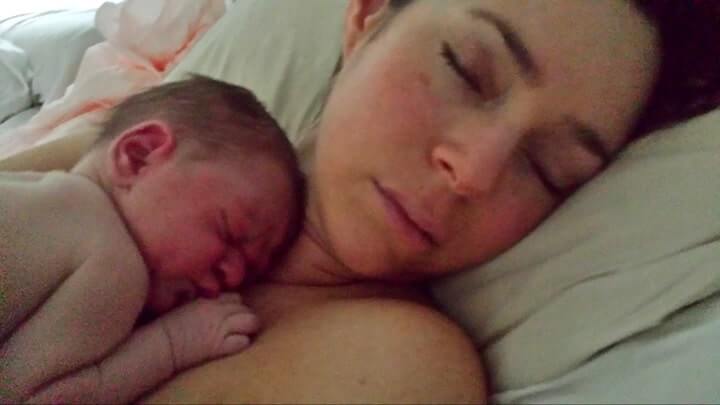
Benefit #2: Enhances Bonding
The hour after birth is sometimes called The Golden Hour, a period in which “both mother and child are best primed to form an intense chemical connection with each other,” writes Patty Onderko, who is a mother of twin boys. The factor at play in The Golden Hour is the hormone oxytocin – aka the “love hormone” – which helps the uterus contract during labor and also plays a critical role in bonding.
Also, a recent study found that a newborn baby’s smell is as addictive as drugs or food. Duh! The “scents released by both baby and mother during birth have powerful pheromones that attract the two to each other, as well as allow the baby to ‘sniff out’ her mother’s nipple and instinctively begin to nurse.” (source)
What I love most about Patty’s article is that she wrote it after having a cesarean that resulted in just a brief moment of contact after her boys arrived. She communicates beautifully how no one factor makes or breaks us as mothers, and I could not agree more. This is not to say women who have cesareans cannot practice kangaroo care – they often can!
Benefit #3: Reduced Postpartum Depression
Though there are many factors that affect postpartum depression, new research suggests that skin-to-skin contact immediately following birth may reduce the incidence in moms. The ability to hold, snuggle, warm, smell, kiss, and nurse baby right after birth all stimulate intricate hormonal patterns within the mama that reinforce mothering behaviors and feelings of well-being. If these experiences are lacking, some experts believe that the mother’s body interprets this as something going wrong with the birth. This may induce a stress/grief response that, in some cases, may create feelings of anxiety or depression.
“According to the study in the Journal of Obstetric, Gynecological, and Neonatal Nursing, skin-to-skin contact between the mother and baby may be an alternative therapy for mothers trying to avoid taking medication. The study reveals that new mothers who had six hours of skin-to-skin contact during the first week followed by at least two hours during the next month reported fewer depressive symptoms.
Saliva samples confirmed lower cortisol levels, a marker of stress, than their counterparts. For a baby, skin-to-skin contact helps fulfill the need for human contact and promotes bonding. The touching releases the hormone oxytocin in the mother, which encourages infant/mother attachment and increases the feeling of well-being and relaxation.” (source)
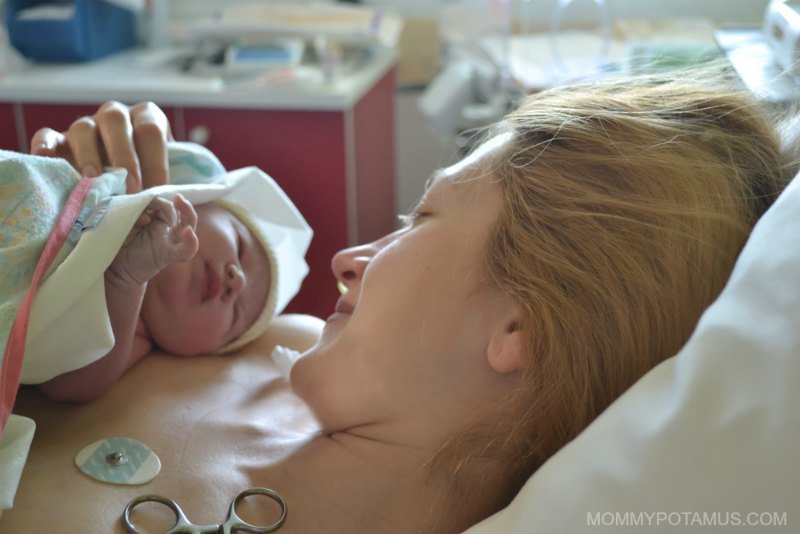
Best of all, this technique is free and has no side effects. “Unlike other interventions to reduce depressive symptoms in the postpartum months, SSC (Skin-to-Skin Care) is easy to use, readily accessible, cost effective, and without adverse effects,” said AWHONN’s Chief Executive Officer Karen Peddicord, PhD, RN. “Therefore, women’s health professionals can encourage their patients to practice mother/infant SSC as in intervention strategy to lessen depressive symptoms and anxiety while improving maternal mood.” (source)
Benefit #4: Baby Cries Less
“A study in the journal Pediatrics reports that skin-to-skin contact for as little as three hours a day can reduce infant crying by 43 percent. This can lead to lower stress levels for a new mother who is otherwise unsure how to calm her crying infant.” (source)
Benefit #5: Better Sleep
“Furthermore, skin-to-skin contact helps infants fall asleep more easily and also sleep for a longer period of time. This allows the new mother to get more rest and reduce stress levels.” (source)
Benefit #6: Better Gut Health & Immunity
Skin-to-skin contact helps baby’s digestive system mature. The contact “stimulates the vagal nerve, causing increased growth in size of the villi in the newborn gut, which provides a larger surface area for the absorption of nutrition.” (source)
There is also “less chance of infection, because babies given kangaroo mother care become colonized with the bacteria on their mother’s own skin. This causes her milk to produce antibodies in response and makes it specifically protective against those bacteria. In other words, it strengthens their immune system. This is by far one of the main kangaroo care benefits in both poor and wealthy countries alike.” (source)
Benefit #7: Breastfeeding
Babies who receive skin-to-skin care are more likely to nurse sooner and longer. This can help mama get her milk supply well-established.
“In a study of 21 babies after a vaginal birth,3 researchers divided them into two groups. One group was laid skin-to-skin on mother’s body, examined briefly, then returned to skin-to-skin contact for two hours.
The other group was shown to the mother, examined, and swaddled with hands free and then returned to mother. The swaddled group showed delayed feeding behaviors, suckled less competently at their first breastfeeding, and established effective breastfeeding later.” (source)
Who Can Do Skin-To-Skin?
“Skin to skin with baby is good for all types of births, assuming your baby is stable, as most full term babies are at birth. Even after a cesarean birth (c-section) mom can hold baby skin to skin or dad if mom is not available. Skin to skin care for preterm babies is also important and many NICUs will direct you in how to use skin to skin care to help stabilize your new baby,” says childbirth educator Robin Weiss.
If you want to be skin-to, be sure to let your practitioners know before you go into labor!
Wondering How To Implement Skin-To-Skin Care?
Here’s a guide to skin-to-skin care after birth.
What if I missed out?
In the process of writing this post I began to grieve aspects of my first birth. Though I was able to be skin-to-skin with my daughter in the first moments after she arrived, my understanding of what was “best” for her at the time meant that I swaddled her as soon as my birth team left. I feel like I missed out on something with her in those early days, but I rather than get “stuck” in feeling bad about my ignorance I’ve been choosing to seek out times to connect with her now. It’s not always easy with a little baby in tow, but it does my heart good as I process what I’ve learned, and I hope it does her heart good, too.
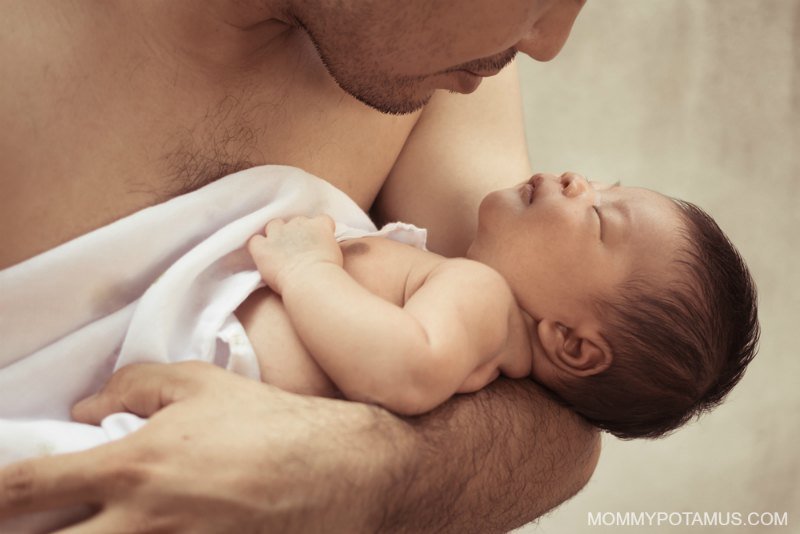
Now, go forth and snuggle!

